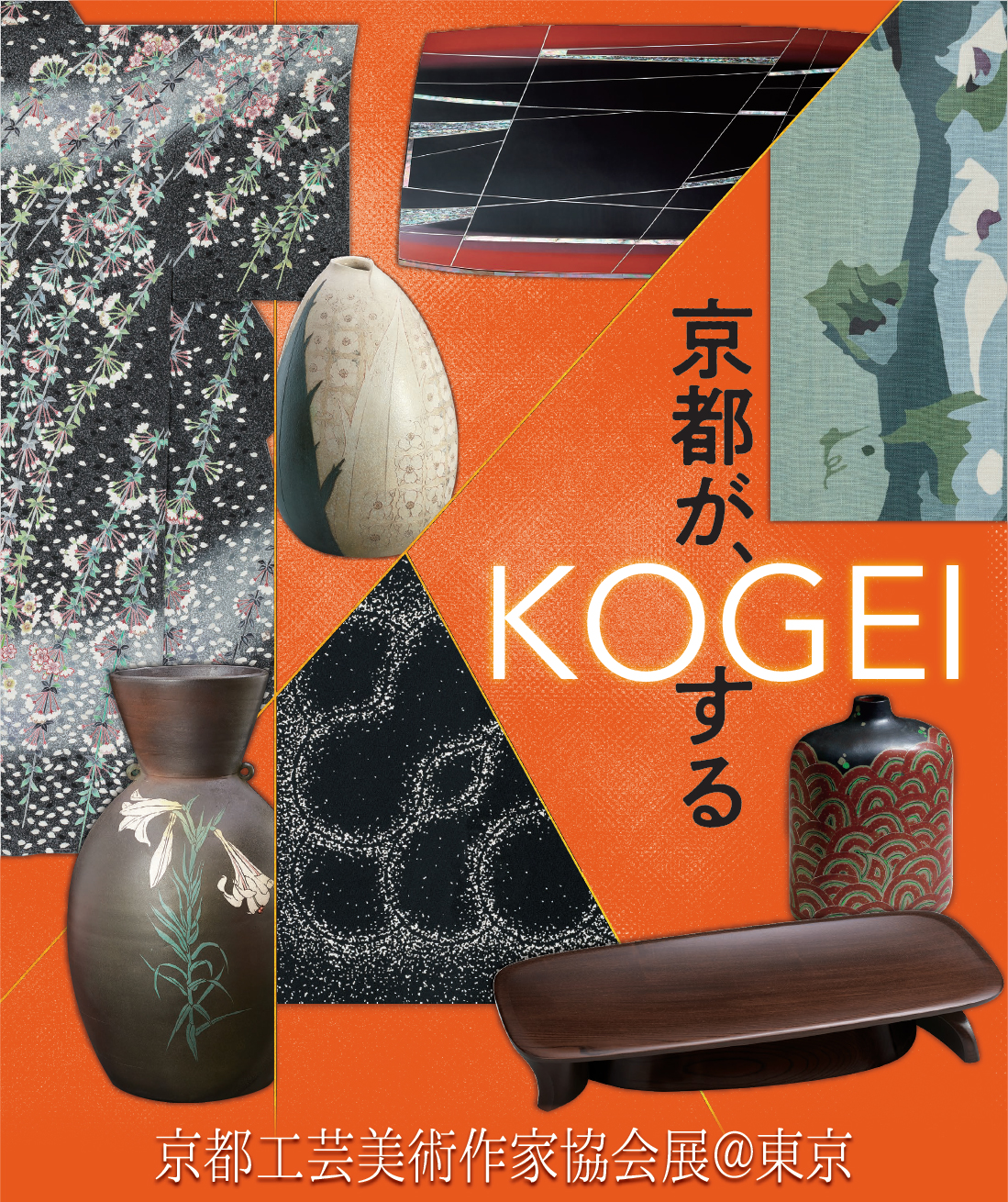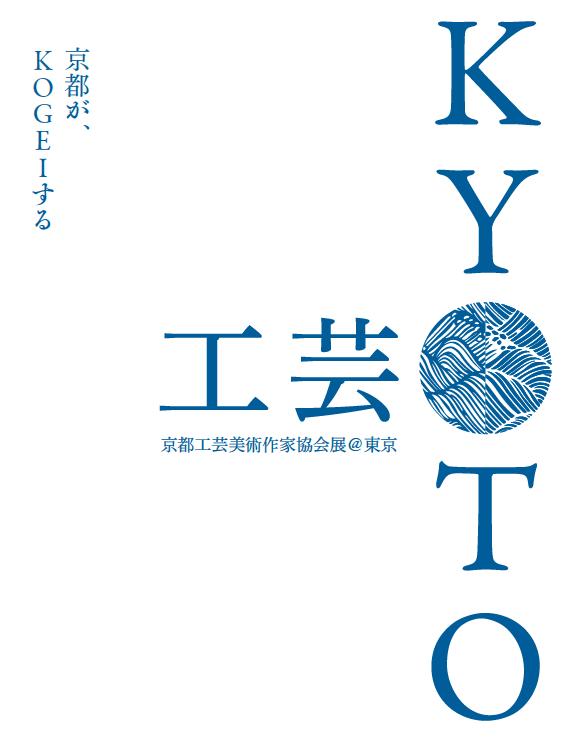The Kyoto Kogei Association is a rare body of artists with no other like it in Japan. The artists hail from diverse fields such as dyeing and weaving, ceramics, urushi lacquerwork, metalwork, dollmaking, glassmaking, woodwork, shippo cloisonné, kirikane gold leaf cutting, bamboo crafts, metal and gemstone crafts, and sekiho, and are not associated with any specific organization or group. They have come together under the banner of "Kogei" and have continued their pursuit of beauty through new artistic expressions. The association comprises numerous first-rate artists in each field, including members of the Japan Art Academy and living national treasures, and with around 350 members in total, its sheer scale is remarkable. It is a group that has been formed precisely because of the long history and wide-ranging cultures of Kyoto. Further, Kyoto is home to a great many art schools, and in addition to working at their own workshops, many association members also work as instructors at senior high schools, specialist colleges, universities, and research institutes, and even as researchers themselves. In a variety of ways, the association is entrusted with developing the next generation of artists.
Since its establishment in 1946, the association has built up an extensive track record predominantly through exhibitions, and through friendly rivalry, its artists have sought to promote and develop the field of Kogei. In addition to an annual exhibition, the association also hosts a large-scale anniversary exhibition every five years, where visitors can see larger works from a greater number of artists. Moreover, while the association has long hosted exhibitions in Tokyo, Fukuoka, and other regions in Japan, it has also gone overseas, with an exhibition in Edinburgh, UK, in 2001, and two exhibitions in Shanghai, China, in 2016 and 2018. In 2011, the association held an exhibition in Nantan City in Kyoto to coincide with the National Cultural Festival, while in 2015, it hosted the Beauty of Rimpa in Kyoto exhibition alongside the Kyoto Nihonga Association to celebrate the 400th anniversary of the Rimpa school of painting in both Kyoto and Tokyo. In recent years, the association has teamed up with art museums and galleries in both Japan and abroad to proactively participate in member-selected, voluntary, and invitational exhibitions.
Cross-genre interaction among members provides fantastic opportunities for the artists to confront new materials and methods, and not be constrained by tradition. This provides a foundation for the creation of new expressions, and as the artists are not influenced by any particular organizations or groups, the association functions as a platform where artists can try out new things while freely demonstrating their individuality.
Recently, the association has been working on an archiving project to bring together artist information, and a project to reinforce its communicational capabilities so as to keep up with the times. In particular, the strengthening of its communicational capabilities using IT is essential for the world we live in today. Its new website has provided a new means to link global users with member artists, regardless of their understanding of IT, and is a hugely important step forward to showcasing the individuality of the artists to the rest of the world. From a broader perspective, it is a way to raise the level of Kyoto's Kogei, and also a way to send out the Kyoto brand where individuals can come gather.
Amid the Covid-19 pandemic, the association has been extremely active, pouring its efforts into exhibitions, communications, and collaborations with hotels and shops. Meanwhile, in addition to their art, the association’s artists are proactive in diverse roles, be it their jobs or their work to develop the next generation of artists. It seems to me that the members are fighting the crisis of the craft shared by the members that can only be done in the association by being proactive, even though they have diverse roles such as individual work and training of future generations in addition to producing works. In addition, exchanges with overseas organizations are gradually increasing, and there is a growing sense of expectation among post-Covid-19 pandemic associations that their efforts toward a brighter future are beginning to bear fruit. In this way, we are beginning to see the strengths and possibilities that only a collective organization can offer.
To conclude, I pray that the great roles and efforts of the Kyoto Kogei Association are carried forth to the next generation, and I look forward to its continued development.
Sachiko Sugama
Chief Curator
The Museum of Kyoto



















